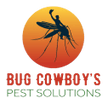Get Rid of Pests Today
The Norway Rat
The House Mouse
The Norway Rat

Norway rats (Rattus norvegicus), also known as brown rats, are highly adaptable rodents thriving in urban and rural environments worldwide, often near human settlements. They are omnivorous, eating grains, fruits, meats, and garbage, and are notorious for burrowing, gnawing, and climbing, which helps them access food and shelter. Their life cycle includes a 21-24 day gestation, with litters of 6-12 pups that mature in 2-3 months, leading to rapid population growth; they typically live 1-3 years in the wild. Fun facts: Norway rats are excellent swimmers, capable of treading water for days, and have a strong social structure, communicating with ultrasonic vocalizations; despite their bad reputation, they’re intelligent, trainable, and even kept as pets in domesticated forms.
The Roof Rat
The House Mouse
The Norway Rat

Roof rats (Rattus rattus), also known as black rats or ship rats, are agile, nocturnal rodents commonly found in warm climates, often nesting in elevated areas like attics, trees, or roofs. They are omnivorous, favoring fruits, grains, and nuts, and are skilled climbers, using their long tails for balance, which allows them to infiltrate buildings through high entry points. Their life cycle involves a 20-22 day gestation, producing litters of 5-8 pups that reach maturity in 2-3 months, with a lifespan of about 1-2 years in the wild. Fun facts: Roof rats are notorious for their role in spreading the Black Plague historically, can leap up to 3 feet vertically, and are highly cautious, often avoiding new objects or traps, showcasing their intelligence and adaptability.
The House Mouse
The House Mouse
Trapping Options

House mice (Mus musculus) are small, adaptable rodents thriving globally in close proximity to humans, often inhabiting homes, warehouses, and fields. They are nocturnal omnivores, consuming grains, seeds, fruits, and scraps, and are known for their rapid breeding and ability to squeeze through tiny openings (as small as a dime). Their life cycle includes a 19-21 day gestation, with litters of 5-8 pups that mature in 6-8 weeks, allowing populations to explode; they typically live 1-2 years in the wild. Fun facts: House mice are excellent jumpers, capable of leaping a foot high, communicate with ultrasonic squeaks, and have a remarkable sense of smell, detecting food or danger from afar; their domesticated counterparts are popular pets and widely used in scientific research due to their genetic similarity to humans.
Trapping Options
Exclusion and Homeowner Tips
Trapping Options

Trapping options for rodents like Norway rats, roof rats, and house mice include snap traps, humane live-catch traps, and glue traps, each with varying effectiveness and ethical considerations. Snap traps, such as Victor or T-rex brands, are highly effective for quick, humane kills when placed along rodent runways with baits like peanut butter or nuts, but require careful setup to avoid injuring non-target animals. Humane live-catch traps, like Havahart, capture rodents for release, though relocation can stress animals and may not prevent their return unless entry points are sealed; glue traps, while effective for bait-shy rodents, are less humane, causing prolonged suffering and are banned for public use in some regions like England. Bug Cowboys Pest Solutions is the ideal choice for rodent control due to their expertise in integrated pest management, ensuring precise trap placement and rodent-proofing to address infestation causes. Their professional, eco-responsible approach minimizes risks to pets and wildlife, offering tailored solutions that DIY methods often fail to achieve, backed by thorough inspections and long-term prevention strategies.
Baiting Options
Exclusion and Homeowner Tips
Exclusion and Homeowner Tips

Baiting options for rodents, such as Norway rats, roof rats, and house mice, primarily involve anticoagulant and non-anticoagulant rodenticides, delivered via bait stations to target these pests effectively. Anticoagulant baits, like those containing bromadiolone or difethialone, are highly effective, causing internal bleeding over days, while non-anticoagulants, such as bromethalin, act faster by targeting the nervous system; both require secure, tamper-resistant bait stations to protect non-target animals and children. Proper bait placement along rodent pathways and the use of attractants like peanut butter or cereal maximize success, but incorrect application can lead to bait shyness or environmental contamination. Bug Cowboys Pest Solutions should handle baiting because their trained professionals ensure precise, safe application, adhering to regulations and minimizing risks to pets, wildlife, and humans. By leveraging their expertise in rodent behavior and integrated pest management, they save time and money by quickly eliminating infestations and preventing costly reinfestations through expert sealing of entry points and ongoing monitoring, far surpassing the hit-or-miss results of DIY efforts.
Exclusion and Homeowner Tips
Exclusion and Homeowner Tips
Exclusion and Homeowner Tips

Homeowners can exclude rodents like Norway rats, roof rats, and house mice by sealing entry points with steel wool, caulk, or metal mesh, focusing on gaps around doors, windows, vents, and pipes, as mice can squeeze through openings as small as a dime and rats through quarter-sized holes. Regularly inspecting and maintaining screens, clearing yard debris, storing food in airtight containers, and keeping garbage bins tightly sealed reduce attractants. Trimming tree branches away from roofs prevents roof rat access, while fixing leaks eliminates water sources. Bug Cowboys Pest Solutions enhances these efforts with preventative pest control, offering professional inspections to identify vulnerabilities and tailored exclusion strategies, such as installing door sweeps or chimney caps. Their proactive approach, including ongoing monitoring and eco-friendly treatments, ensures long-term rodent prevention, saving homeowners from costly infestations and structural damage while providing peace of mind through expert, customized service.
This website uses cookies.
We use cookies to analyze website traffic and optimize your website experience. By accepting our use of cookies, your data will be aggregated with all other user data.
